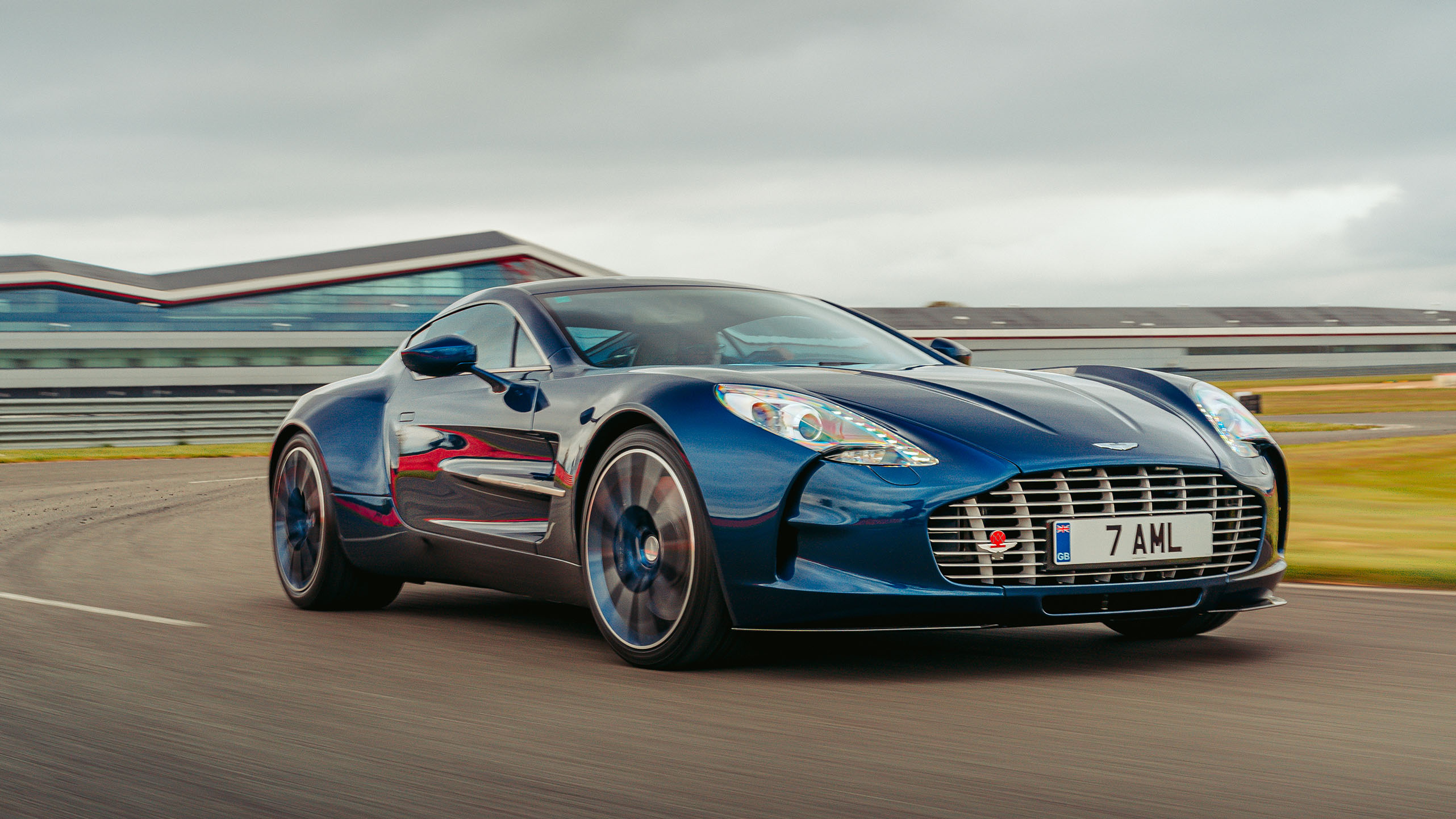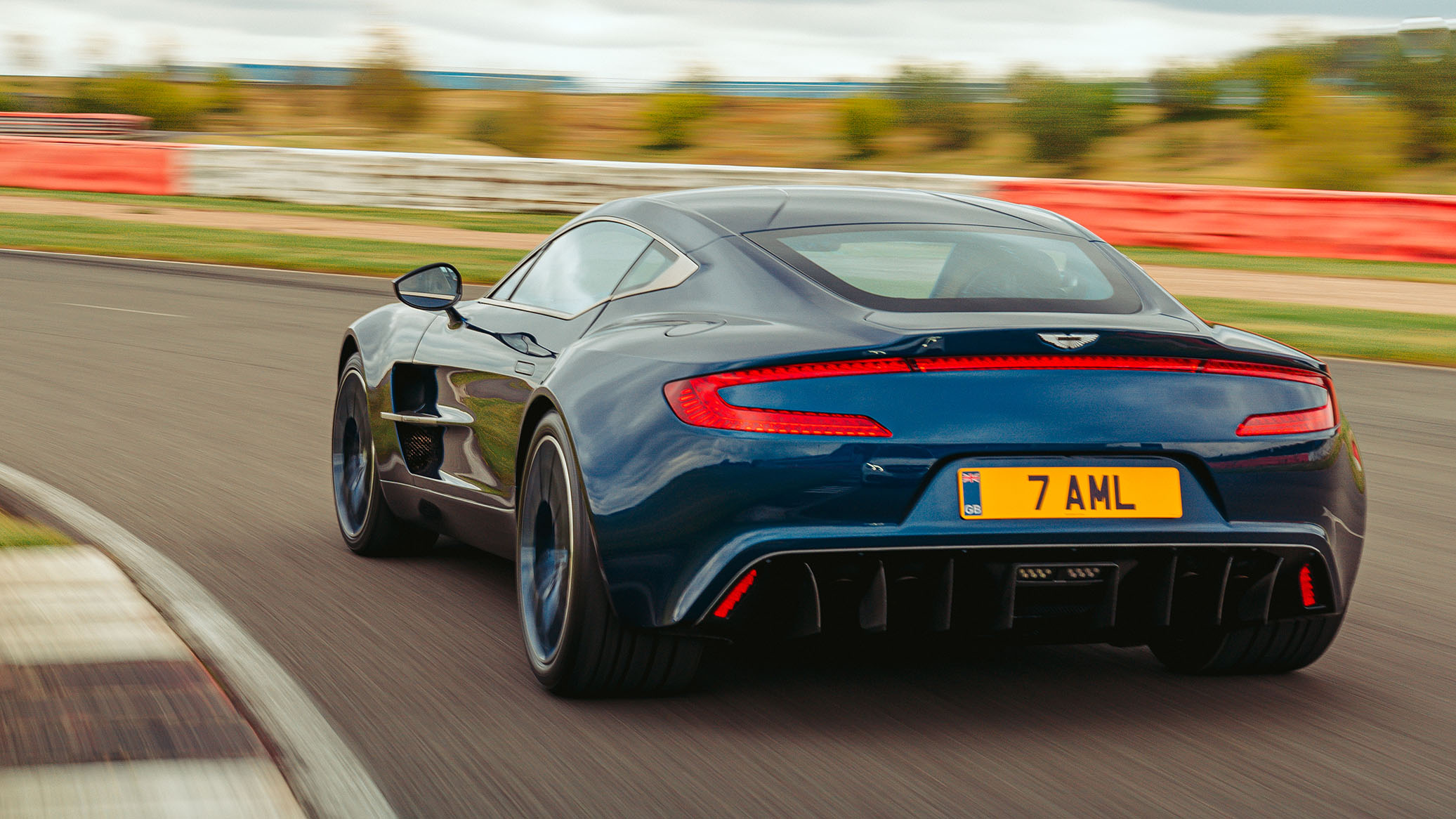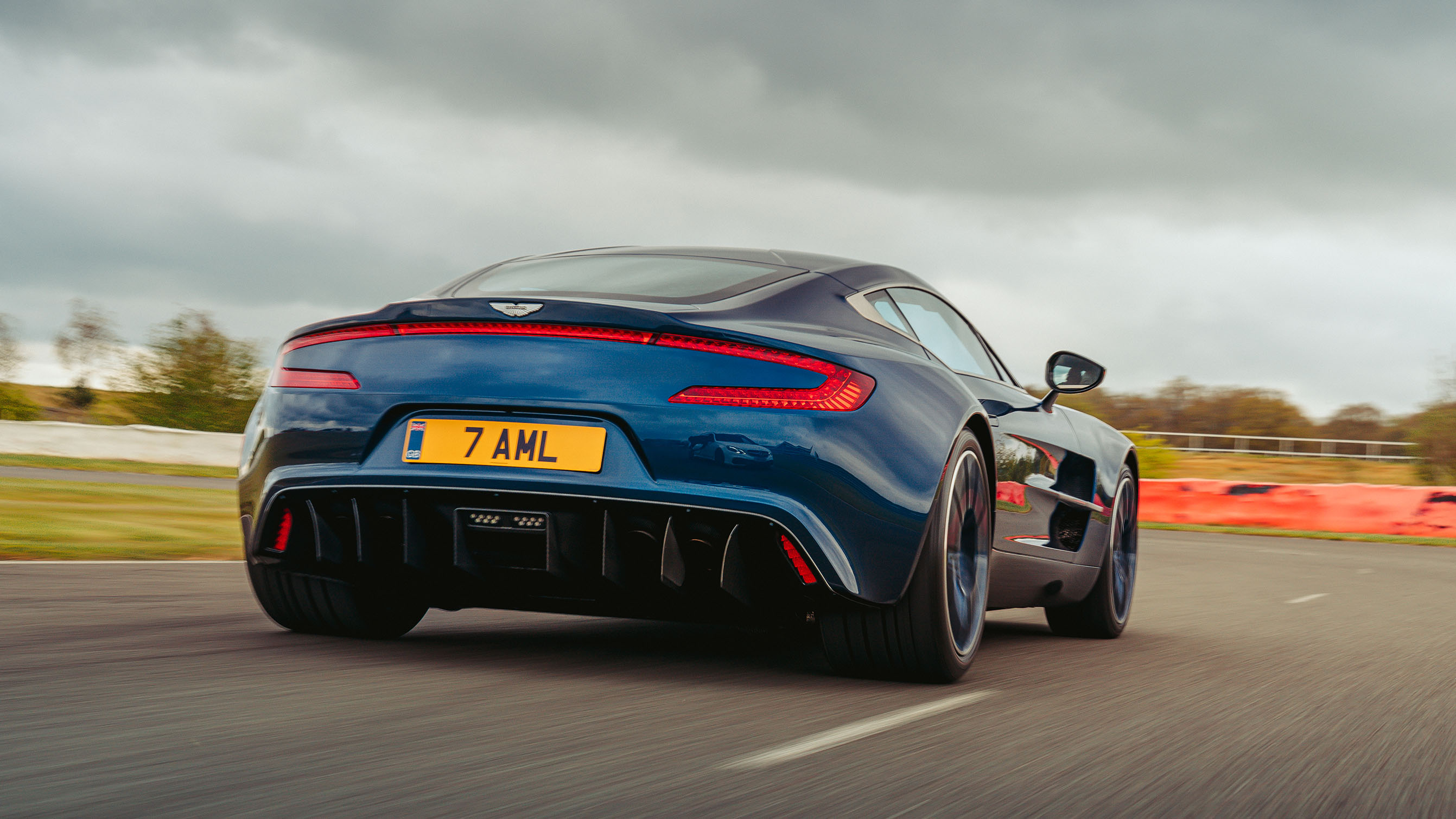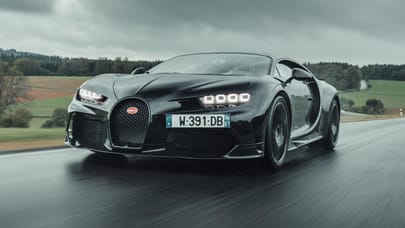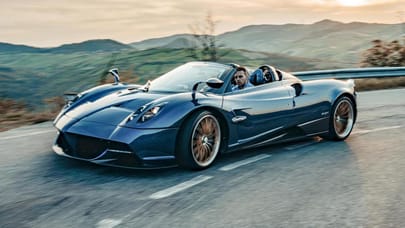
Aston Martin One-77 review
Good stuff
Phenomenal engine wrapped in sheer beauty. It’s a proper driver’s car, and a piece of pure supercar sculpture. What an event.
Bad stuff
Rubbish gearbox, a few Poundland cabin details. They don’t pop up for sale very often.
Overview
What is it?
A vision of the ultimate road-going Aston Martin. Or at least, it was back in 2009 when the One-77 was first announced. Then-Aston boss Dr Ulrich Bez stunned the car world when he announced that Aston Martin was going to build a limited-edition supercar that would cost a million pounds. This was Aston standing up against the likes of Bugatti and Pagani and saying ‘we’ll have a slice of your best-of-the-best action, thanks very much chaps'.
While the One-77 bore all the usual Aston cues (widemouth grille, sweptback headlights, a prolonged bonnet and cab-back stance with a pert tail) this was not simply some sort of powered-up, flared-out Vanquish spin-off covered in papier-mache. The car was designed around a race-spec carbon-fibre monocoque with exquisite carbon subframes cradling the front-mid-mounted engine and in-board suspension.
This utterly uncompromised layout was then clothed in all-new aluminium panels. Bespoke lights, wheels, doors and glass were all tooled specifically for this run of just 77 cars. The deposit alone needed to secure a build slot – presuming you were very near the top of Aston Martin’s preferred client list – was a plump £200,000. That left a nice, round £1,000,000 to pay upon delivery.
Fittingly Aston’s most expensive car to date was also its fastest.
Deep beneath the front-hinged bonnet lies the One-77’s main event: its fabulous engine. For a flagship Aston, it could only be a normally aspirated V12. The company’s usual 6.0-litre unit was fettled by Cosworth, who ditched the usual cylinder liners in favour of a nanoscopic low-friction coating, swelling capacity to a mighty 7.3 litres, while the engine’s actual weight fell by 15 per cent to 260kg, thanks to its lighter internals. This love letter to internal combustion was then shoved 100mm lower in the car than Aston’s run-of-the-mill V12s, buried deep where it couldn’t escape, or interfere with the handling.
More room to suck/squeeze/bang/blow and racier parts doing all of the above meant more power, of course. Rated at 750bhp and 553lb ft, the One-77 was, at launch, the most powerful naturally aspirated car in the world. And while cars like the Ferrari F12 and various one-off Zondas quickly caught back up, the One-77 has remained Aston’s fastest road car, good for a claimed top speed of 220mph, with 0-62mph achievable in 3.7 seconds.
Unlike today’s rarefied exotica, the One-77 did without a plethora of driving modes. Besides a Sport setting for the gearbox, there’s nothing to dial up or switch around: no multi-stage traction control here. There is active aero, but the pop-up rear spoiler hardly looks like the sort of aerofoil that could keep this car pinned to a tunnel ceiling.
All at once, the One-77 was properly cutting edge, and somehow charmingly old-school. While it may have been overshadowed by contemporary Bugattis going faster in a straight line – and hamstrung by its antiquated gearbox – this car deserves to be remembered as one of the most special British supercars of all time.
After all, it’s so exclusive, you’ve never even seen James Bond near one...
Photography: Mark Riccioni
What's the verdict?
If you’re a true British front-engined supercar aficionado you’ll be well aware of the bungled tale of the Mercedes-Benz SLR McLaren, and how Gordon Murray fought and lost a personal battle against Merc’s boardroom culture to have the all-carbon supercar kept as light and pure as possible.
It ended up being supercharged, weighed down with luxuries and equipment, and pitched as a hypercar spliced with a long-legged GT that never quite hit the mark and landed somewhere inbetween.
The One-77 shows what might have been. The is what the SLR would’ve been like if Murray could’ve realised his naturally aspirated, lightweight dream. There’s a joyous sense of barely contained fury to the One-77, that its engine is bloody apoplectic about being restrained inside a stunning bodyshell and would like to shout itself free given half a chance.
Aston Martin had the gall to dress up an edgy, aggressive, take-no-prisoners thoroughbred in a dignified lounge suit. Perhaps that’s the reason it’s not celebrated as one of the most iconic hypercars of the early 21st Century. It should be. Apart from the gearbox. The One-77’s transmission isn’t just an Achilles heel – it’s a war crime.
Then again, this car represents a moment in time, before downforce, hybrid drivetrains and technological mode-overload began to define the world’s fastest road cars. So perhaps it’s fitting this sensational engine has to duel such a truculent gearbox before it can unleash its potency on the world. This imperfection defines its place in history, like the Second World War shrapnel scars on Westminster Abbey.
Or maybe in decades to come, there’ll be a manual conversion for the One-77, like there is nowadays for the original Vanquish, also beset by jerky gearbox purgatory. The One-77 will stand for all time as one of Aston Martin’s finest hours: a British Zonda, fierce and slightly preposterous. It’s only a proper transmission away from being one of the true all-time greats of the analogue supercar realm.
The Rivals
Trending this week
- Car Review
BMW 1 Series
- Top Gear's Top 9
Nine dreadful bits of 'homeware' made by carmakers




